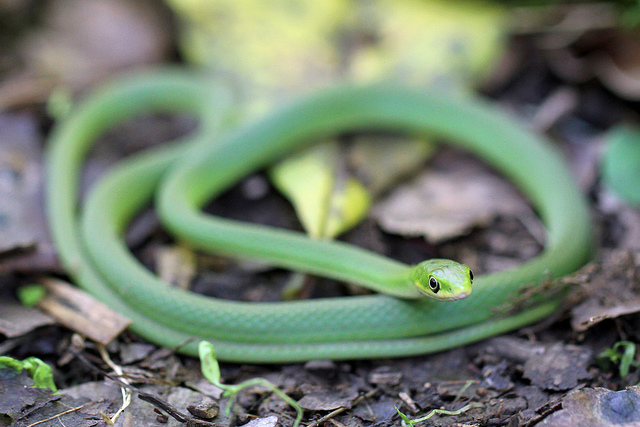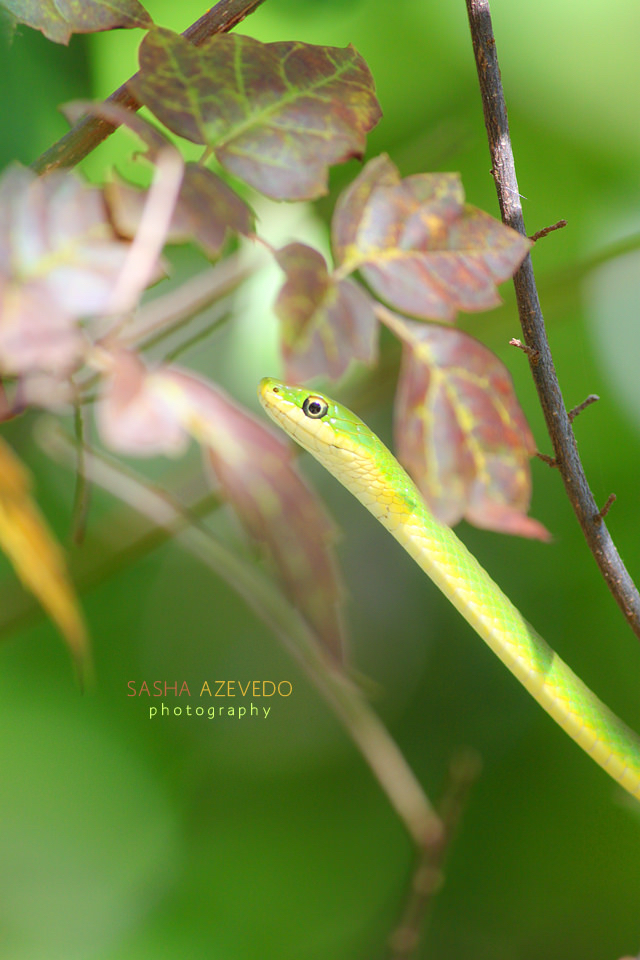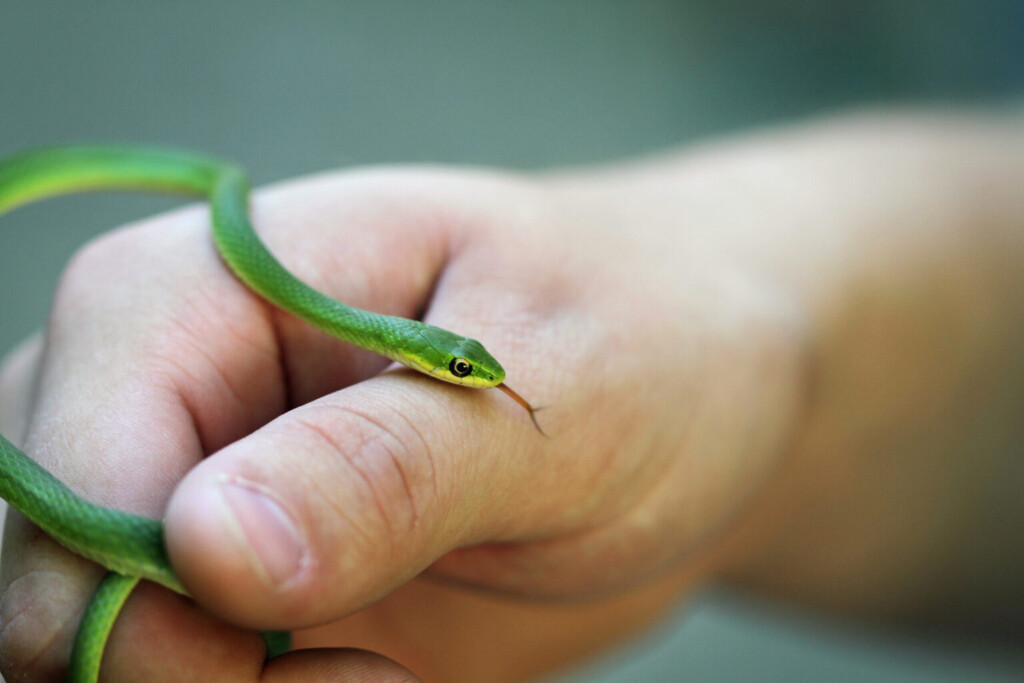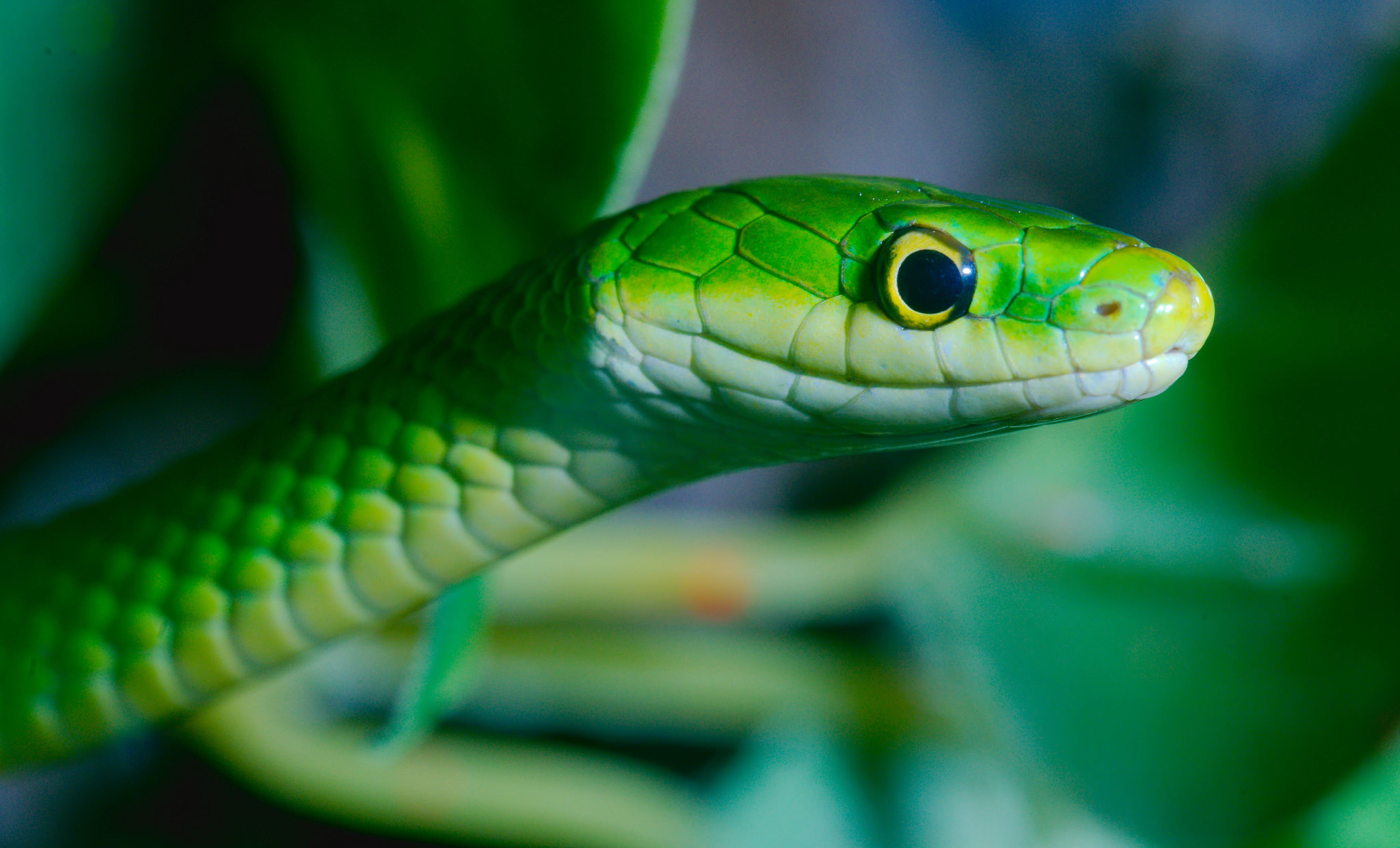BY KIERAN LINDSEY, PhD
“But never met this Fellow, Attended or alone, Without a tighter Breathing, and Zero at the Bone.”
Unlike Emily Dickinson, ophiophobia (fear of snakes) isn’t an issue for me. I like snakes and know them to be upstanding ecosystem citizens… um, ok, “upstanding” probably isn’t the best descriptor for creatures without legs but you get my drift.
Of course, I offer an extra measure of obeisance for any and all animals who engage in chemical warfare but their numbers are relatively few here in North America. Of the over 125 snake species endemic to my home continent, for example, only 21 are venomous. All 18 of the vipers have a distinctive triangular head, and the 16 rattlesnakes in this group are armed with an unmistakable warning system. The 2 coral snakes species found in the U.S. wear a color pattern that’s easy to recognize from further than arm’s-length, and since Saint Louis, Missouri, isn’t anywhere near the western coast of Mexico I don’t have to watch out for yellowbelly sea snakes.

So if I happen upon a small garden hose that unexpectedly untangles and slips into the lawn I’m not chilled to the marrow. On the contrary — when I spot a green grass snake (Opheodrys spp.) passing by I’m likely to lean in cordially and say, “Well, hello gorgeous!”
And what comely creatures these colubrids are, with large, round eyes and a red tongue tipped in black. Bright, nearly neon green above, accented with sunny yellow and ivory below, their color scheme is positively tropical despite the fact that they’re only found well above the equator. Both the smooth (O. vernalis) and rough (O. aestivus) are slight and lithe. For this genus “rough” refers raised scale keels along the back and sides but, like all snakes, the skin of both grass snake species is satiny, not slimy.
 Contrary to what the name implies, grass snakes don’t limit themselves to turf and terra firma. They are great climbers, moving with grace and prudence as they stalk insects and small amphibians through brambles, bushes, and trees. The many regional names given to this species testify to this fact, including: magnolia snake, huckleberry snake, vine snake, bush snake, and green tree snake. Grass snakes are also known to mimic small breeze-blown branches to blend into the surroundings while waiting for prey, or while attempting to avoid becoming prey to birds, mammals, and other snakes, including the eastern racer (Coluber constrictor) and the eastern king snake (Lampropeltis getula).
Contrary to what the name implies, grass snakes don’t limit themselves to turf and terra firma. They are great climbers, moving with grace and prudence as they stalk insects and small amphibians through brambles, bushes, and trees. The many regional names given to this species testify to this fact, including: magnolia snake, huckleberry snake, vine snake, bush snake, and green tree snake. Grass snakes are also known to mimic small breeze-blown branches to blend into the surroundings while waiting for prey, or while attempting to avoid becoming prey to birds, mammals, and other snakes, including the eastern racer (Coluber constrictor) and the eastern king snake (Lampropeltis getula).
Grass snakes are good swimmers who are often found near water, in and around moist meadows and marshes, in riparian habitat as well as open forests and woodlands, as well as cities and suburbs.
Their willingness to live in developed areas puts grass snakes at risk of being persecuted by house cats, run over by cars and mowers, and they appear to be susceptible to pesticides as well. These docile beauties haven’t gone unnoticed by the pet trade, sadly. Although Smooths are protected in some places, few states in the U.S. regulate reptile harvest. Hundreds, perhaps thousands, of grass snakes are collected from the wild each year, making them one of North America’s most exploited snakes. This practice is particularly tough on Roughs because they are easily stressed and don’t do well in captivity.
Seems to me Emily’s reaction to spotting a snake is more appropriate and understandable from that narrow fellow’s point of view… wouldn’t you agree?


